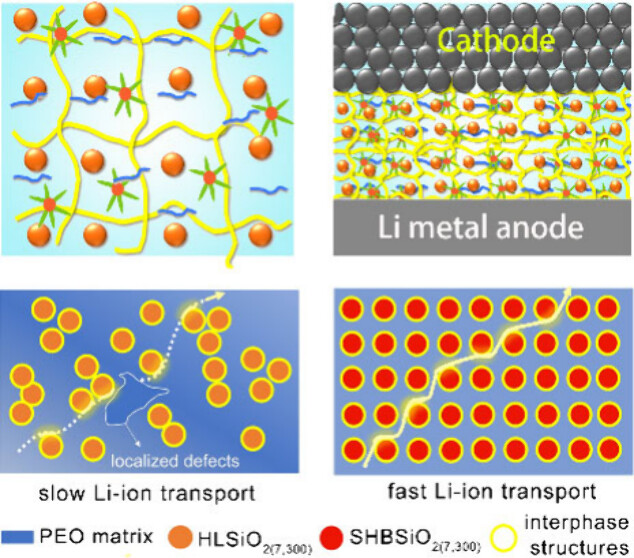Abstract
High-performance organic-inorganic composite solid-state electrolytes (OICSEs) are pivotal for advancing solid-state lithium metal batteries (SSLMBs), offering the potential for enhanced safety and higher energy density compared to conventional liquid electrolytes. This study systematically explores the influence of nanofiller physicochemical properties (particle size, specific surface area, and surface energy) on the electrochemical performance of polyethylene oxide (PEO)-based OICSEs. By optimizing these parameters, we developed a PEO/superhydrophobic SiO2 OICSE incorporating low surface energy SiO2 nanofillers with an optimized particle size of 7 nm and a high surface area of 300 m2 g-1. This engineered OICSE demonstrated exceptional ionic conductivity (4.3 x 10-4 S cm-1 at 30 degrees C), high Li-ion transference number (0.5), and superior electrochemical stability (up to 5.1 V vs Li+/Li). When integrated into a Li|LiFePO4 battery, the battery exhibited outstanding rate performance (up to 5.0 C) and remarkable cycling stability (93.8% capacity retention after 500 cycles at 30 degrees C) and maintained stable performance even at 0 degrees C. These improvements are attributed to enhanced Li-ion transport pathways and superior solid/solid interfacial stability. The superhydrophobic SiO2 nanofiller presents a scalable and commercially viable strategy to enhance processability, interfacial compatibility, and low-temperature performance, thereby establishing a robust platform for the development of next-generation OICSEs in SSLMBs.

Keywords Plus:POLYMER ELECTROLYTE,IONIC-CONDUCTIVITY
Published in ACS APPLIED MATERIALS & INTERFACES,Volume17;10.1021/acsami.5c05964,JUN 12 2025


